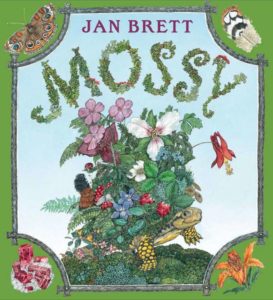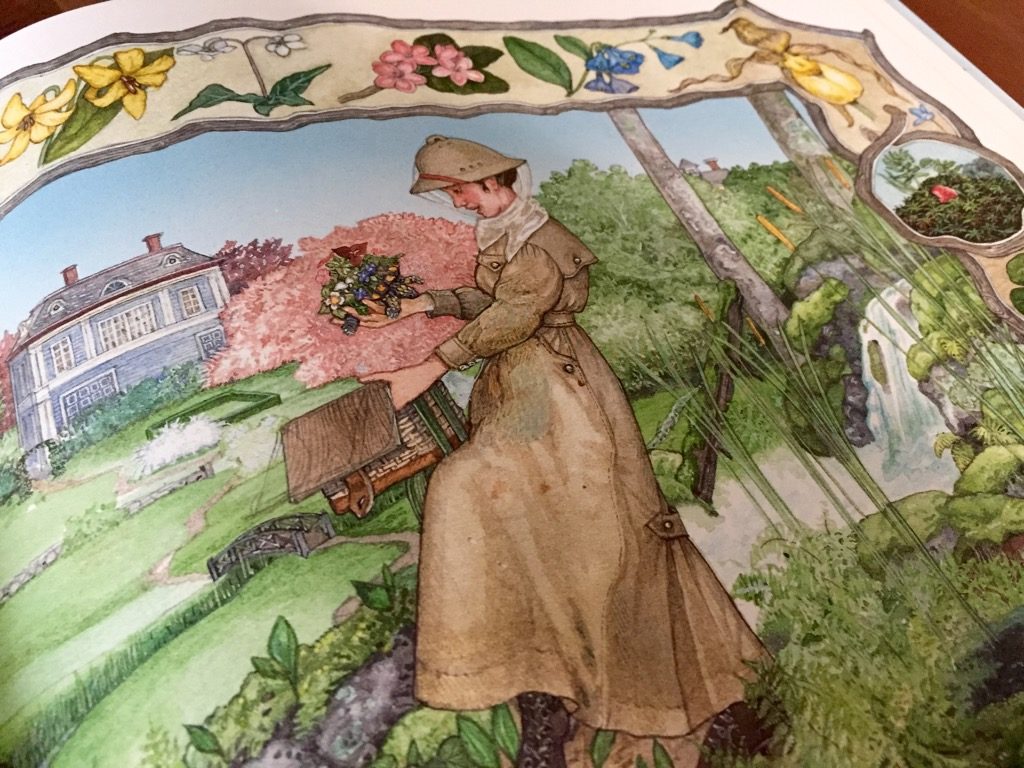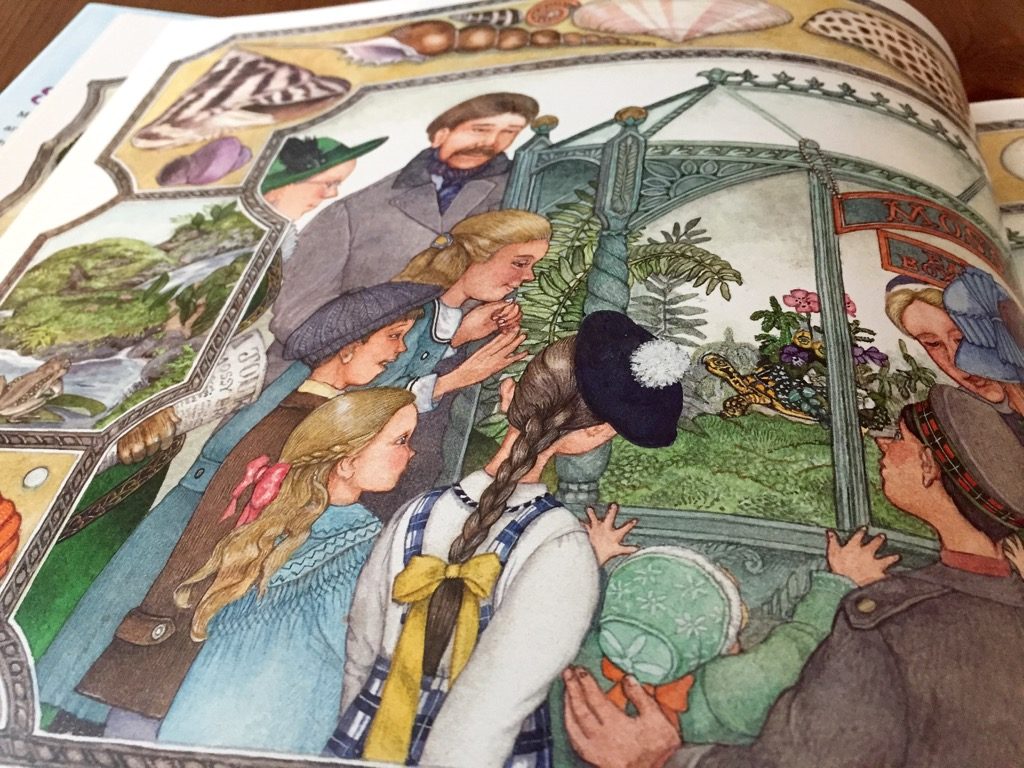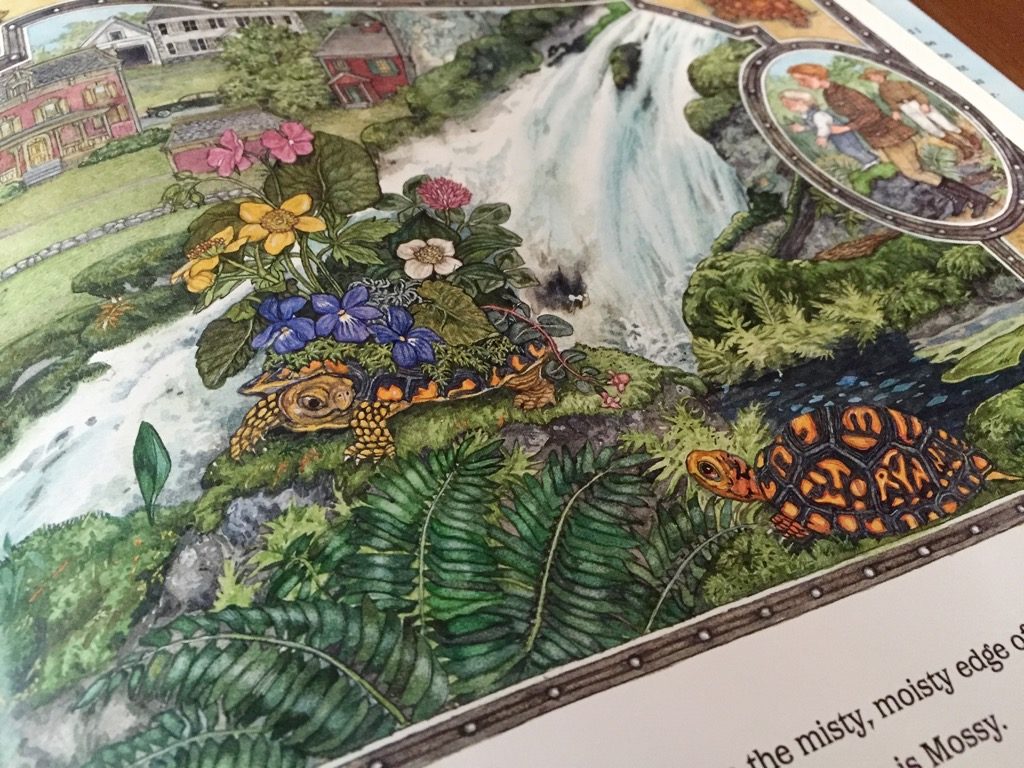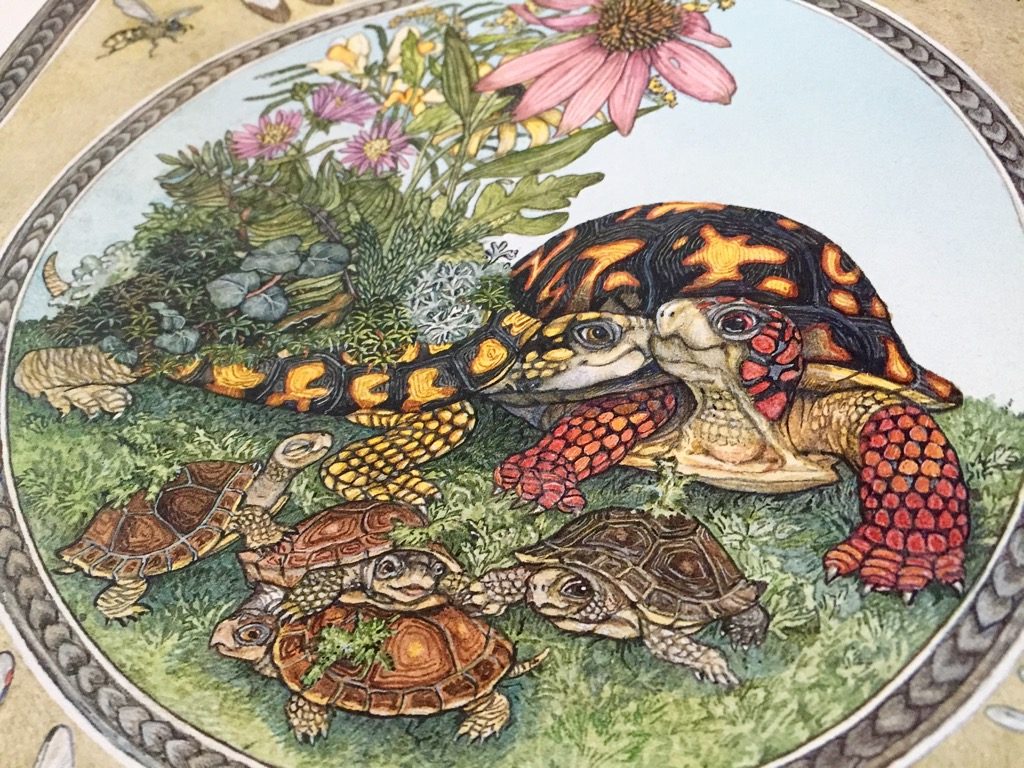“Instead of watching television, take just half an hour and create something. The feeling you get when you create something entirely new is very compelling.”
 With over 40 million books in print, Jan Brett is one of the most popular authors and illustrators in modern children’s literature. She’s also a treasure trove of advice for kids learning how to draw. In a variety of interviews, Brett shares timeless advice on how to get started in the competitive world of illustration. And in over twenty videos, she provides detailed instructions on how to draw the animals featured in her critically-acclaimed books.
With over 40 million books in print, Jan Brett is one of the most popular authors and illustrators in modern children’s literature. She’s also a treasure trove of advice for kids learning how to draw. In a variety of interviews, Brett shares timeless advice on how to get started in the competitive world of illustration. And in over twenty videos, she provides detailed instructions on how to draw the animals featured in her critically-acclaimed books.
According to an interview on TeachingBooks.net, Brett first knew that she wanted to be an illustrator when she was in kindergarten.
I knew that I wanted to be an illustrator since I was in kindergarten. I can remember the exact day. The art teacher usually came to our classroom once a week, but she was absent that day. Instead, our regular teacher gave us each a huge piece of paper and crayons, and we could do whatever we wanted. My family had been planning to go to the circus, but it was canceled at the last minute. I was very disappointed, so I decided I would draw the circus on my paper.
We had an hour to do this, which is a long time for a kindergartner, but I just was swept away by this project. I drew all the things I thought I would see at the circus. It was probably better than the real circus. I imagined the stuff I would eat, horses (I loved horses), ladies with feathers on their heads, and more.
When I finished, I just said, “Oh, this is what I want to be when I grow up.” When I was asked what do you want to be when you grow up, I would say, “I want to be an artist.” And they would say, “Why don’t you become a children’s book illustrator?” In those days it was the kind of job a woman would do. They would also suggest I become a teacher.
I love children because that’s a part of my life that was so happy, and I like to remember back to those days where everything is a discovery, and the world is so fresh. I loved being a child. If I do have a talent, it’s not so much being an artist, but it’s being able to remember back to that time.
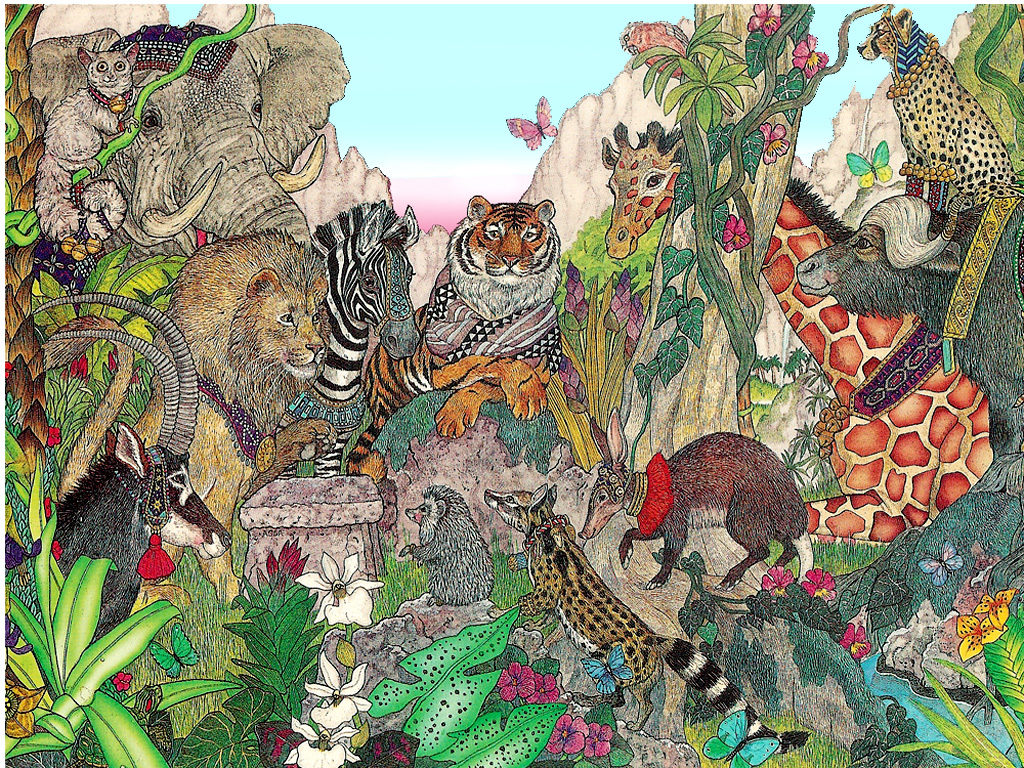
Brett is an author and illustrator, which means that she has to come up with an idea for a story before she starts writing or drawing. Inspiration and creativity are different for everyone, of course. Brett finds that ideas for stories and characters can pop into her head virtually anywhere, at any time.
It’s very complicated because each book has its own path. When I go for a run, sometimes I’ll think of an idea. There’s something about all that oxygen when you’re running that makes you get good ideas. Sometimes before I go to sleep I’ll say, “I need the answer to this question.” Then I’ll sleep on it, and sometimes when I wake up in the morning, I’ve got the answer.
I have these ideas in my mind for a long time, and then they will come to me. Sometimes I’ll have an idea that will be in my mind for 10 years, like The Easter Egg. I didn’t have all the pieces together.
I ask children, ‘Have you ever seen a shooting star when you’re out at night? All of a sudden you see this giant meteor going by that is maybe green and blue, and it lights up the whole sky? Ideas are like that.’
Sometimes, I will pull an idea out of some other ideas that I’ve had, and it will just kind of evolve. Other times, boom! It will be like that shooting star. I’ll just get the whole idea at one time, and it will just be like an explosion in my head. Each one is really different.
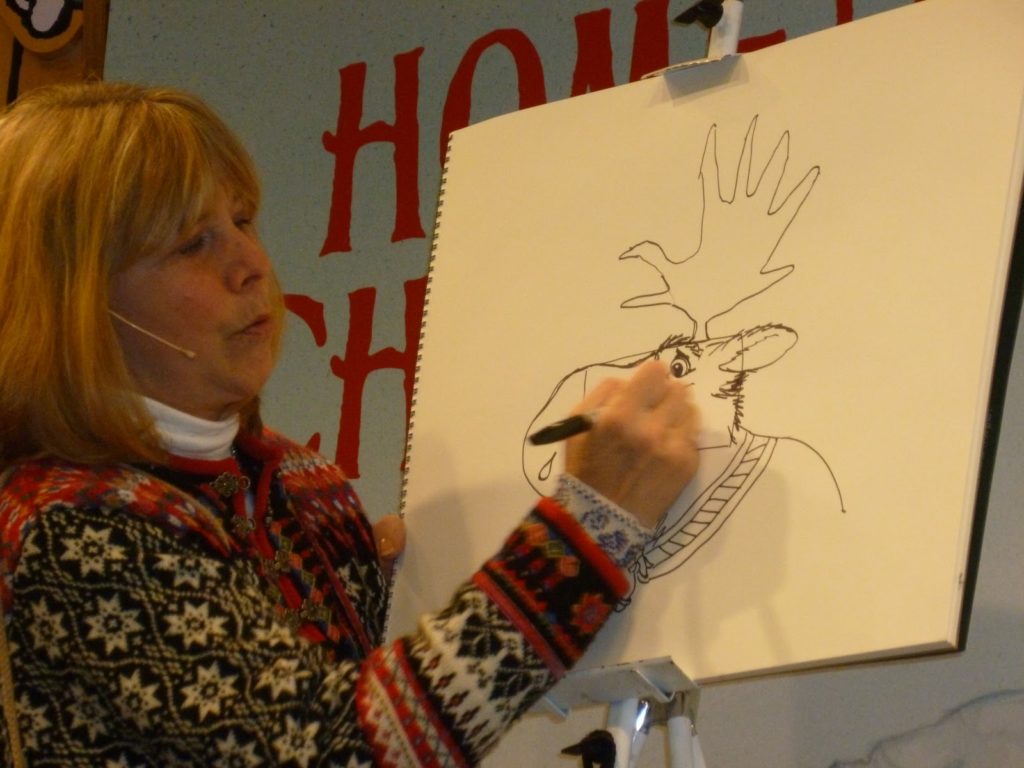
It may come as a surprise to younger readers, but drawing is an intricate, painstaking process for Brett. It typically takes her an entire year to create a single children’s book. She uses watercolors with very small brushes to illustrate all of her books. In an interview on the Scholastic website, she said that “it takes an hour for me to draw an inch,” and “I do spend a week on a double-page spread.”
The books take a year just to do the drawing. I will travel to a country to do the research and get ideas. Sometimes I don’t travel to do research, but mostly I do. It takes a long time, but do I ever get tired of it? Not really. The characters kind of grow and evolve.
I just love to draw. It’s very intense for me. The day will just go by like the snap of a finger. A lot of times I’ll draw or paint late into the night. When I am really concentrating, I kind of lose track of what I am doing.
I’ll go to bed, and the next morning I’ll look at my artwork and say, “Wow!” It kind of took on a life of its own and directed me rather than me making conscious decisions for the art. It’s almost like a force takes hold of me. I think it’s a human condition, this ability to story-tell either with words or with drawing. It’s just something that takes over and comes from your subconscious.
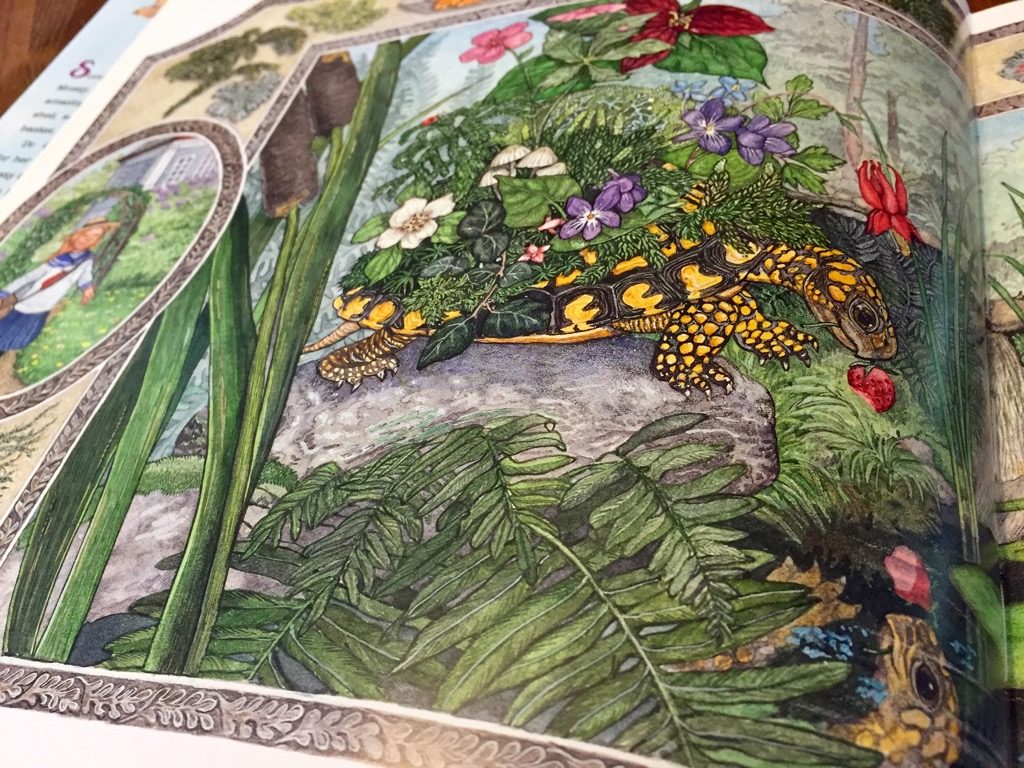
Brett frequently tours around the country to visit with children in schools and bookstores. She occasionally provides drawing lessons during her lectures, and according to the interview on TeachingBooks.net, she shares personal drawing advice with the children.
When I go to a school, I show them how to draw something. When I look at all their drawings at the end, each one will have so much individuality and pizzazz. I tell them how important it is that they have some way to use their creativity because it’s such a treasure that each person in the world has this little box of traits and talents and experiences that is totally different from anyone else’s.
I like to tell them about looking at their fingerprint, and how theirs is different from everybody else’s. It’s the same way when they draw a picture. I admire the way they’ll present the same image that I’m presenting, but they’ll put their own ideas into it.
For example, when they draw a lion, the mane might be totally fluffy, or a hedgehog will be pink or will have long eyelashes or will have big muscles in its legs. They just take things that they’re interested in or are part of a story that’s in their head, and put it into their drawings. I find that incredibly inspiring and hopeful about human beings.
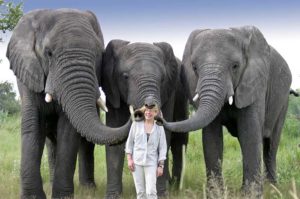
Brett provides additional drawing advice for children in the interviews, including another interview on BookPage:
- “Give yourself time. Instead of watching television, take just half an hour and create something. The feeling you get when you create something entirely new is very compelling.”
- “When I make a mistake in my pictures, I start a new picture or just erase. And some of the best things happen when I’m fixing a mistake.”
- “It’s not as easy to write a story as you may think. The stories find me, I don’t find the stories.”
- “I keep painting until I feel like I can hear the sounds, smell the smells, and feel how soft the fur of the animals is. Drawing is like tennis, or playing the piano, or playing basketball. The more you practice, the better you get. Anybody can learn how to draw.”
- “Everybody has their own style. Figuring out what makes your style work is part of the process.”
For kids interested in improving their drawing skills, or just trying to draw some of the animals in Brett’s stories, Brett provides over twenty video drawing tutorials on her YouTube channel.
Children can watch Brett’s detailed videos to learn how to draw an elephant, a giraffe, a stork, a tiger, and much more. Complement with books by Jan Brett with drawing advice from other illustrators.

